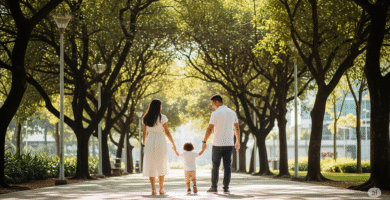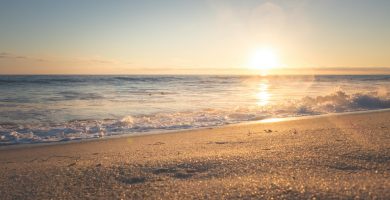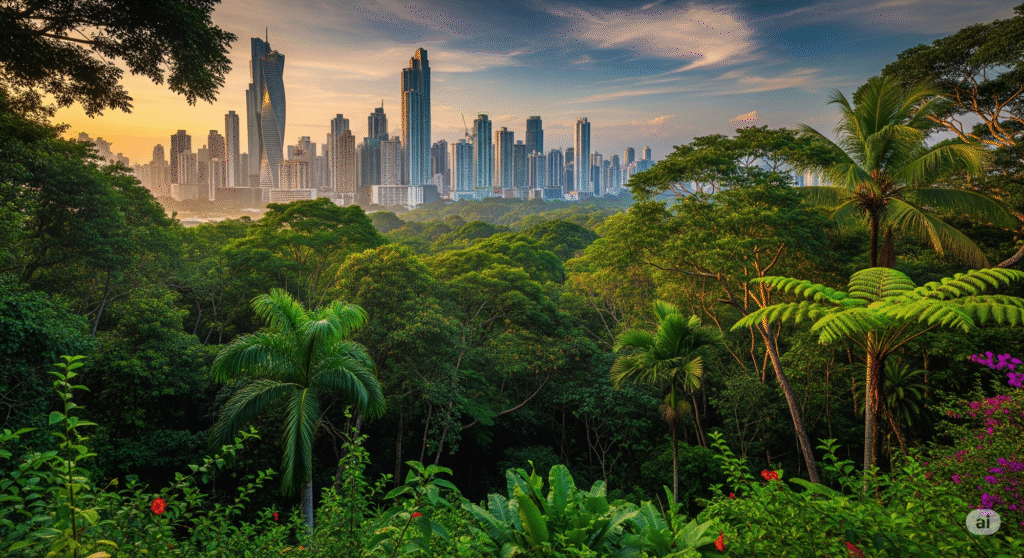
Living in Panama: The Complete Guide from a Local Perspective
Why More People Are Choosing to Live in Panama
Panama has been attracting a growing number of expats, retirees, and digital nomads in recent years. Its strategic location, vibrant economy, and tropical landscapes make it a top choice for those seeking a mix of modern amenities and natural beauty. With the Panama Canal as a global trade hub, the country enjoys strong economic growth and excellent connectivity to both North and South America.
The appeal goes beyond business opportunities. Expats are drawn to Panama for its friendly tax policies, the use of the U.S. dollar, and its retirement program, which is considered one of the best in the world. The Pensionado visa offers significant discounts on entertainment, healthcare, and transportation, making it especially attractive for retirees.
As a Panamanian myself, I’ve seen firsthand how foreigners fall in love with our beaches, mountains, and cosmopolitan vibe. However, I also know there are realities beyond the glossy brochures, and that’s what makes this guide different—you’ll get an insider’s perspective along the way.

Healthcare in Panama for Expats: Public, Private & Insurance Guide

Accommodation in Panama City: Stay Smart, Save More, Enjoy Fully
Thinking about moving to Panama? Whether you are planning retirement, relocating with your family, or simply exploring a new lifestyle abroad, Panama has become one of the most popular destinations for expats from the U.S., Canada, and Europe. This guide covers everything you need to know about living in Panama—from the real cost of living to the best cities, pros and cons, and what daily life is really like.
Cost of Living in Panama: What You Need to Know
One of the first questions expats ask is: Can I live on $3,000 a month in Panama? The short answer is yes—many retirees and digital nomads live comfortably with that budget.
How much money do you need to live comfortably in Panama?
Most expats report spending between $1,800 and $3,000 per month, depending on location and lifestyle. Big cities like Panama City are more expensive, while smaller towns like Boquete or David offer a lower cost of living.
Cost of Living in Panama vs USA and Costa Rica
Compared to the U.S., basic expenses such as healthcare, rent, and groceries are significantly cheaper. Costa Rica, often compared with Panama, tends to be slightly more expensive in terms of housing and healthcare.
Housing: Rent and Home Prices
Rental prices vary widely. In Panama City, a modern apartment can range from $800 to $1,500 per month, while in smaller towns, you can find rentals for $500 or less. Buying property is also popular among expats, with average prices much lower than in North America.
Utilities such as electricity can be costly due to the use of air conditioning, while water and internet remain reasonably priced. Eating out varies; local restaurants (fondas) offer meals for $5 to $7, while upscale dining can exceed $30 per person.
From a local perspective, knowing where to shop makes a huge difference. Panamanians avoid overpriced expat supermarkets, opting for public markets and local suppliers to save money. This small adjustment can cut grocery expenses by half.
Taxes are another advantage. Foreign income is not taxed if earned outside Panama, making it a haven for remote workers and investors. However, it’s important to plan and consult with a tax advisor to avoid surprises.
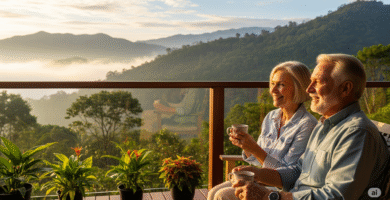
Retire in Panama: Benefits, Visas, and Financial Planning

Shopping in Panama City: Discover Luxury & Local Finds
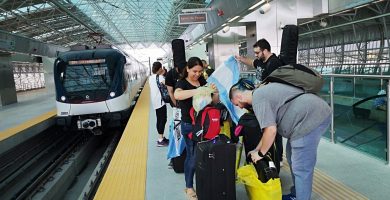
Metro Bus Card: Save Money and Travel Smarter in Panama City
Safety in Panama: The Truth Locals Know Best
Safety in Panama is a topic filled with misconceptions. International rankings often list the country as safer than many of its Latin American neighbors. While this is true, safety still depends heavily on where you go and how you behave.
From my personal experience, you can walk with your phone in hand without fear in many areas, unlike in other countries where theft is rampant. However, no local would ever walk with their phone in certain neighborhoods known for gang activity or extreme poverty. Understanding the local dynamics is key to staying safe.
The safest areas for expats include Panama City’s Punta Pacifica, Costa del Este, and El Cangrejo, as well as towns like Boquete and Coronado. Areas to avoid at night include parts of El Chorrillo and San Miguelito.
In short, Panama is generally safe, but common sense and local knowledge go a long way.
Panamanian Food: Flavors You’ll Love and Things to Watch Out For
Panama’s culinary scene is a delicious blend of Afro-Caribbean, Latin, and indigenous influences. From fried plantains to fresh ceviche, the flavors are rich and comforting. Breakfasts are a cultural highlight—think fried hojaldres, empanadas, and carimañolas.
Here’s the thing: most breakfast Panamanian dishes are fried, and while they’re incredibly tasty, they can be heavy on cholesterol. As a local, I’ve seen friends gain weight quickly after indulging daily in these delights. The trick is moderation.
Street food is part of the experience, but choose vendors with good hygiene. Expats often love Panama’s tropical fruits, available at low prices in local markets. Mangoes, pineapples, and papayas taste better here than anywhere else.
So, enjoy the food, but balance it out with the abundance of fresh produce available year-round.
Weather and Infrastructure: What Expats Rarely Expect
Panama has a tropical climate, which means hot temperatures year-round and a distinct rainy season from May to November. While expats usually expect warm weather, they’re often unprepared for the heavy rains.
One thing locals know well: some streets flood quickly during storms. I’ve learned to avoid these routes, as driving through them can damage your car or leave you stranded. Expats new to the country often learn this the hard way.
Infrastructure is improving, especially in urban areas, but outside the city, you may encounter poor road conditions and limited public transportation. Power outages are rare but can still happen during storms.
Despite these challenges, Panama’s modern developments—like the expanding Metro system in Panama City—are making life increasingly convenient.
Best Places to Live in Panama: City, Mountains, and Coast
Panama is diverse—your lifestyle depends on where you choose to live.
- Panama City: Modern, cosmopolitan, with high-rise apartments, shopping malls, and nightlife. Ideal for those who want city life with an international vibe.
- Boquete: Famous for its cooler climate, mountain views, and large expat community.
- Coronado & Pacific Beaches: Perfect for those who want sun, sand, and easy access to the capital.
- Bocas del Toro: Caribbean islands offering a laid-back lifestyle, ideal for beach lovers and adventurers.
- David, Pedasí, and El Valle: Smaller towns that offer a more affordable, slower-paced lifestyle.
Each place offers a different pace of life, so visiting before settling is highly recommended.
Expat Life in Panama: Safety, Culture & Daily Living
Living in Panama as an American or other foreigner means adjusting to a new rhythm of life.
Is Living in Panama Safe?
Panama is generally safe for expats, especially in popular expat hubs. Like anywhere, use common sense and be aware of petty crime in urban areas.
Americans and Expats in Panama
An estimated 25,000+ Americans live in Panama, especially retirees. Most expats find the community welcoming and easy to integrate into.
Culture and Daily Lifestyle
Life is more relaxed compared to the U.S. or Europe. Expect a slower pace, tropical weather year-round, and cultural differences such as more flexible time schedules.
Lifestyle in Panama: Tradition Meets Modern Living
Living in Panama means embracing a mix of traditional customs and modern conveniences. The culture is warm and welcoming, with strong family values and community ties. Festivals, like Carnaval and Fiestas Patrias, showcase vibrant music, dance, and colorful parades.
At the same time, Panama City offers everything from luxury malls to international cuisine, making it easy to blend local culture with a modern lifestyle. English is widely spoken in business and expat areas, but learning Spanish will enrich your experience.
Daily life has its quirks. For example, time is more relaxed, and things may not always run on schedule. Embracing this slower pace is part of enjoying life here.
Residency and Legal Basics for Those Living in Panama
Residency in Panama is relatively easy to obtain compared to many countries. The Friendly Nations Visa offers a straightforward path for citizens of over 50 countries, including the U.S. and most of Europe. It requires proof of economic ties, such as employment or investment.
Other options include the Pensionado Visa for retirees, which offers generous discounts on services, and investor visas for those bringing capital into the country.
It’s essential to work with a reputable attorney, as immigration rules can change. While Panama is welcoming to foreigners, legal processes still require local expertise to avoid complications.

Panama Friendly Nations Visa 2025: Complete Expat Guide
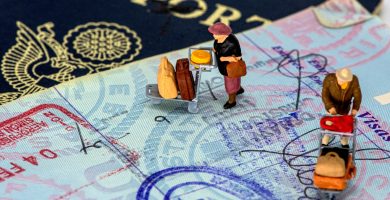
Panama Digital Nomad Visa: The Secret Path to Freedom
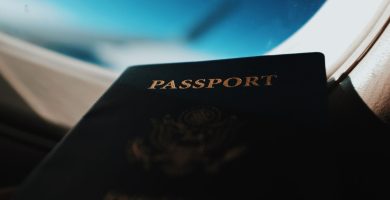
Panama Visitor Visas Requirements: Avoid Hassles with This Simple Guide
Pros and Cons of Living in Panama: The Real Picture
Like every country, Panama has its advantages and challenges.
✅ Benefits of Living in Panama
- Affordable cost of living compared to Western countries
- Lower cost of healthcare and housing compared to the U.S.
- Stable economy and use of the U.S. dollar
- Warm weather and beautiful landscapes
- Welcoming culture and growing expat communities
- Attractive visa programs
❌ Downsides to Consider
- Flooding and occasional infrastructure issues
- Some areas are unsafe if you don’t know where to go
- Humidity can be uncomfortable for some
- Bureaucracy and slower public services.
- Limited access to certain products or brands from abroad.
From my experience as a Panamanian, the key is understanding the local way of life. When you adapt, Panama offers a fantastic quality of life.
Retirement and Assisted Living in Panama
Panama is a top retirement destination thanks to its Pensionado Visa Program, which offers discounts on healthcare, travel, and entertainment.
Assisted Living and Senior Care
In Panama City and other major towns, assisted living options are expanding, with costs significantly lower than in the U.S.
Healthcare for Retirees
Many retirees highlight affordable private healthcare and health insurance. However, Medicare does not cover medical costs abroad, so having local or international insurance is essential.
Conclusion: Is Living in Panama the Right Choice for You?
As someone who knows the country inside out, I can say this: Panama rewards those who take the time to understand it. Whether you’re looking to retire, work remotely, or simply start a new adventure, Panama offers an experience unlike any other.
Panama offers a balance of affordability, lifestyle, and modern conveniences that make it an attractive destination for expats. Whether you’re looking for city life, mountain living, or a beachside retirement, Panama has a place that can feel like home.
For more details, explore the full Living in Panama series, or check out our Healthcare in Panama page to learn about insurance, hospitals, and medical care for expats.
FAQ (Frequently Asked Questions) for Expats
Is Panama safe to live in?
Panama is generally considered a safe country, and most expats and digital nomads feel secure here. While, like any city, Panama City has certain neighborhoods with higher crime rates, these areas are typically well-known. By choosing to live in established expat-friendly neighborhoods and following local advice, you can enjoy a very secure lifestyle.
How much does it cost to live in Panama?
The cost of living in Panama varies significantly depending on your lifestyle and location. In Panama City, a comfortable living standard typically ranges from $2,000 to $3,000 per month. In contrast, living in smaller towns and rural areas can be much more affordable, often allowing for a good quality of life on a smaller budget.
What are the pros and cons of living in Panama?
Pros include a relatively low cost of living, a tropical climate with year-round warmth, and a welcoming environment with expat-friendly visa options. Cons to consider are the high humidity, which can be a challenge for some, occasional heavy flooding in certain areas during the rainy season, and the sometimes slow pace of local bureaucracy.
Can foreigners buy property in Panama?
Yes, foreigners can own property in Panama with the same rights as Panamanian citizens. This makes Panama an attractive and straightforward destination for real estate investment, whether for a primary residence or a vacation home.
Do you need to speak Spanish to live in Panama?
While it’s not strictly necessary, as English is widely spoken in major business centers and within expat communities, learning Spanish is highly recommended. Having some proficiency in Spanish will greatly enhance your ability to navigate daily life, immerse yourself in the culture, and connect with locals.

